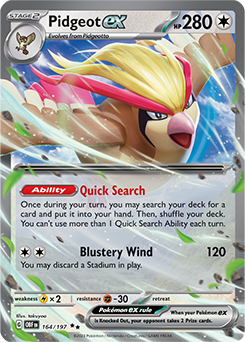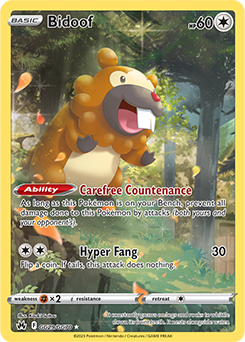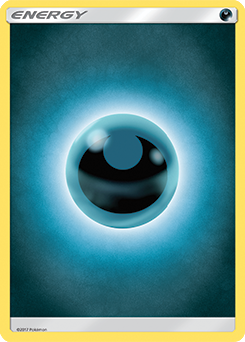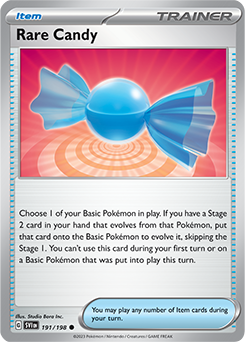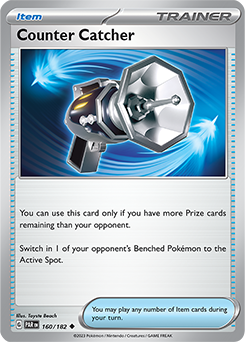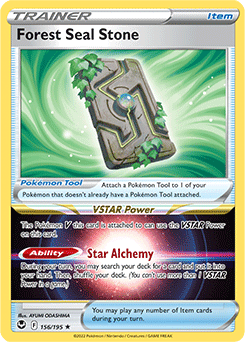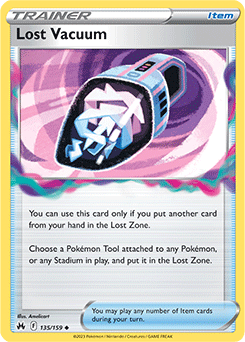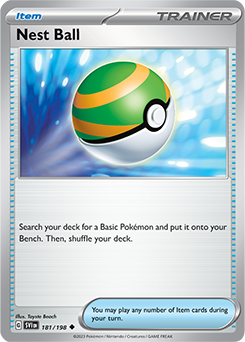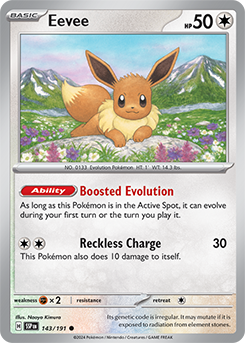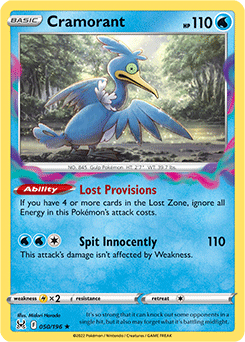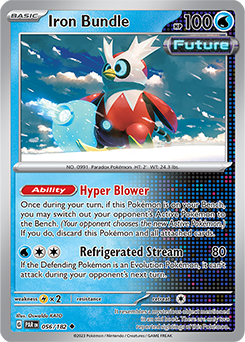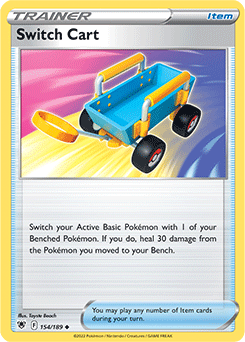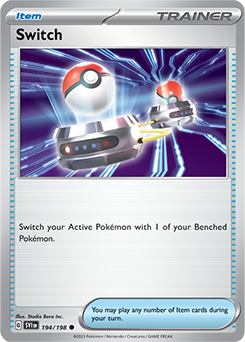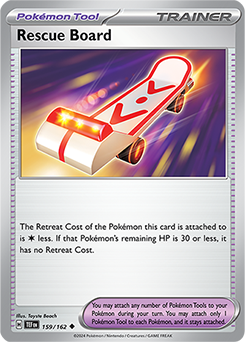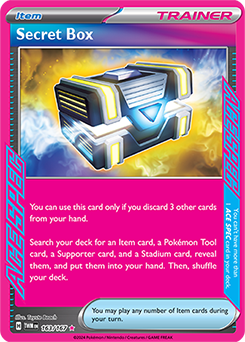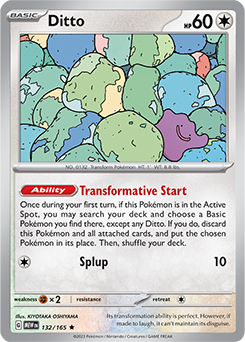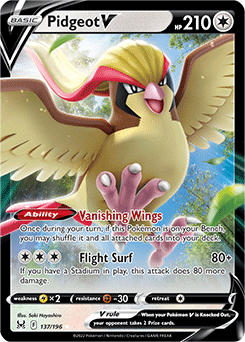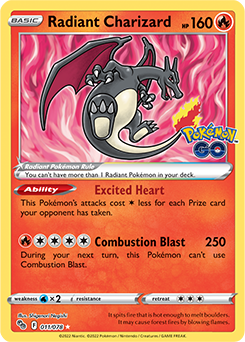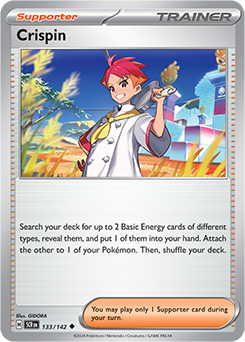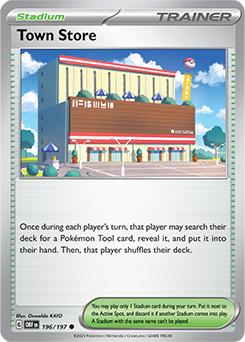The latest expansion, Pokémon TCG: Scarlet & Violet—Surging Sparks, marks the debut of new Stellar Tera Pokémon ex. These dazzling Pokémon and their glorious Tera Jewel crowns can’t help but stand out in your card collection. And with a little creativity, these Pokémon also have what it takes to deliver victories in battle.
For this Triple Play, we’ve pulled together three Pokémon TCG legends to show you how to unleash that creativity. Deckbuilding experts Tord Reklev, Xander Pero, and Ross Cawthon are here to walk us through the construction of three decks that will help explore the potential of three of these new cards—Hydreigon ex, Sylveon ex, and Tatsugiri ex.
Hydreigon ex
Tord Reklev
With a massive 330 HP and two strong attacks, Hydreigon ex from Scarlet & Violet—Surging Sparks immediately stands out to me as a card with a lot of potential. Its Crashing Headbutt attack not only does an impressive 200 damage, but it can also disrupt the opponent by forcing them to discard three cards from the top of their deck. Although the cards discarded are random, it’s not unusual for this attack to find and eliminate crucial pieces of the opponent’s gameplan during a match.
Its second attack, Obsidian, might be a contender for the strongest TCG attack of all time. It does 130 damage to no less than three targets—that’s a whopping 390 damage spread over the opposing field! Another strong Stage 2 Pokémon, Dragapult ex, has a signature attack Phantom Dive that only does 260 damage total. The trade-off is that the Obsidian attack is considerably harder to use and a lot easier to negate thanks to Manaphy from Sword & Shield—Brilliant Stars.
The main challenge in building a deck around Hydreigon ex is figuring out how to efficiently power up its attacks. A few options that come to mind include Mirage Gate, Crispin, Neo Upper Energy, Dark Patch, and Counter Gain.
The approach I am presenting here is focused more around Hydreigon ex’s Crashing Headbutt attack, as it is a lot easier to use. The list also has the option to use Obsidian comfortably when needed.
Some of the fun parts about deck building include trying out new engines, experimenting with different card counts and options, and eventually crafting your favorite deck based on the experiences you built. Sometimes you can use some of your previous knowledge to make a deck almost fully functional immediately, and that’s what I have done here. The engine in this list is heavily based on my Charizard ex deck from the last Europe International Championships. Some card counts are moved around and adapted to accommodate the new format better, but the idea behind it is the same: use Pidgeot ex and Bibarel to constantly refill and access the necessary resources to stream your army of Stage 2 Pokémon ex.
Hydreigon ex Deck Breakdown
The package of Cleffa and Rotom V might look redundant at first—neither can be used simultaneously to draw cards—but there is a good reason for including both. In games when the deck happens to open with only a single Buddy-Buddy Poffin as a setup card, Cleffa can be found to draw into more cards to get you going. This does require an Energy attachment as well for the Retreat Cost, or even a Professor Turo’s Scenario. In games in which you open only with an Arven, Nest Ball and Forest Seal Stone can be searched. Nest Ball can then be used on Rotom V, which will be the target for Forest Seal Stone, which in turn can search out Buddy-Buddy Poffin for your other Basic Pokémon, leaving you with Rotom V in play to draw more cards.
Counter Gain, the Neo Upper Energy ACE SPEC, and Dark Patch are my choices for Energy acceleration for Hydreigon ex. Since the first attack only needs a single Darkness Energy, Counter Gain is an excellent way to make this attack easier to use. As a follow-up, if Hydreigon ex already has Counter Gain and a Darkness Energy attached, attaching Neo Upper Energy will give you direct access to Obsidian. I also think it’s a nice touch that the damage from these two attacks lines up so well. 200 plus 130 damage is enough to Knock Out even other bulky Stage 2 Pokémon ex like Charizard ex and Dragapult ex, while also pressuring the Bench.
The two Professor Turo’s Scenarios help the deck’s mobility and board management. They can remove liabilities with low HP after use, like Rotom V or Lumineon V, or a damaged Pokémon, even Hydreigon ex. With the Dark Patch and Counter Gain, it’s not too difficult to get another Crashing Headbutt going. Collapsed Stadium can be used for similar purposes.
Radiant Alakazam is here to help “fix” a lot of important numbers for us. Some Basic Pokémon V and Pokémon ex have 220 HP, which is a lot easier to reach thanks to Painful Spoons. Most Pokémon VSTAR, like Regidrago VSTAR, Palkia VSTAR, and Lugia VSTAR, or Pokémon ex like Pidgeot ex also have 280 HP, which could be reached with two Obsidian attacks plus Painful Spoons. Squawkabilly is another great target for damage manipulation thanks to its low HP.
Even with the strong engine we are running to set up multiple Hydreigon ex consistently, we still need to draw quite a few cards each turn. To help make the deck’s late game easier to navigate, Bloodmoon Ursaluna ex has been added as the final attacker. Having a different Weakness than Grass-type also comes in handy against decks that are running Teal Mask Ogerpon ex, a popular card that can Knock Out Hydreigon ex with ease. Keep in mind that Counter Gain can be used on Blood Moon Ursaluna ex if needed.
Fezandipiti ex is an addition to an already strong engine, allowing even more cards to be drawn. With Bibarel, Fezandipiti ex, and Pidgeot ex all in play, the deck has an almost unparalleled control over its many different resources. To maximize efficiency, make sure you first use Bibarel’s Industrious Incisors, followed by Fezandipiti’s ex Flip the Script, and finally Pidgeot ex Quick Search—in that order.
Another approach I have found very interesting is playing the deck in a more disruptive way rather than focusing on Prize negation and damage manipulation. Eri, Xerosic’s Machinations and Pokémon League Headquarters would all fit the theme of this deck well and synergize great with Crashing Headbutt.
I encourage you to give Hydreigon ex a chance, and experiment with different cards and strategies to your liking. I hope this can give you a strong foundation to start tests with Hydreigon ex!
Xander says: Hydreigon ex is the dictionary definition of a behemoth. And fittingly, Hydreigon ex requires 4 Energy to power up its Obsidian attack! I like how Tord chose the classic Arven engine, which has proven itself as the best way to play Stage 2 decks. On top of the usual Forest Seal Stone, Hydreigon ex makes good use of Counter Gain, a necessary piece in fulfilling each attack’s Energy requirements.
Bloodmoon Ursaluna ex is not a card I expected to see in the list, but it makes sense now that I think about it. Charizard ex decks can use Radiant Charizard to close out the game, so Bloodmoon Ursaluna ex fulfills a similar niche. Dragapult ex decks typically don’t, but that’s because they aim to take multiple Prize cards at once with the extra damage counters.
Ross says: I like all the support Pokémon in Tord’s Hydreigon ex deck. Hydreigon ex is very powerful, but it is also very difficult to set up, and I think that using many Pokémon spots (Pidgeot, Bibarel, Cleffa, Lumineon V, Fezandipiti ex, Rotom V) for consistency is the right call. One combination I would be tempted to try would be Pecharunt ex plus Binding Mochi. I love this combination in Darkness decks, and it would be a way for Crashing Headbutt to Knock Out Pokémon like Raging Bolt ex and Iron Hands ex. I would probably try one Pecharunt ex and two Binding Mochi over the Radiant Alakazam, one of the Counter Gains, and one of the Professor Turo’s Scenarios.
Sylveon ex
Xander Pero
The most recent Pokémon TCG expansion, Scarlet & Violet—Surging Sparks, unveils a new batch of Tera Pokémon ex that are sure to make a splash in the metagame. I’ll be focusing here on Sylveon ex and its powerful Angelite attack, which shuffles two of your opponent’s Benched Pokémon back into their deck. Although this attack doesn’t do damage, removing two of your opponent’s Pokémon can greatly weaken their board state, leaving you with ample opportunity to stage a comeback.
I’ve decided to pair Sylveon ex with the common Lost Zone engine, making use of Comfey and Colress’s Experiment. While it has fallen out of favor since Kyurem’s debut before this past year’s World Championships, the Lost Zone engine gives us access to the key to powering up Sylveon ex’s Angelite attack: Mirage Gate. With just one Mirage Gate and an attachment for turn, we can go from zero Energy to attacking in the same turn. Other decks centered around Sylveon ex would likely choose Crispin or Sparkling Crystal as their Energy catalyst of choice, though in my opinion these options are too slow to be competitive against other popular Standard decks.
Another benefit of the Lost Zone engine is that we can take the initiative if given the opportunity. Because of Cramorant and Sableye, we can score an easy win if the opponent has a slow start. In those games, we can act as an aggressively oriented Lost Zone deck, such as Andrew Hedrick’s North America International Championships deck list.
However, if his deck falls behind, it can be difficult to stage a comeback. On the other hand, Angelite gives us a win condition even if we fall behind in the Prize trade. If the opponent has a strong start, or must spread resources thin to keep up with our initial pace, Angelite can swing the tides of an otherwise lost battle.
Though it isn’t an exact comparison, Sylveon ex functions similarly to Giratina VSTAR in previous iterations of the Lost Zone Giratina deck. The deck makes use of the common Lost Zone attackers—Cramorant, Sableye, and Radiant Greninja— all while having a higher-HP Evolution Pokémon that is especially good at dealing with opposing Pokémon the Basic attackers cannot: high-HP Stage 2 Pokémon ex. If you were a fan of Giratina VSTAR in the past, Sylveon ex may be a good deck to try.
Here's the deck list I’ve been using:
A hidden benefit of Sylveon ex is that its Angelite attack requires Water and Psychic Energy—two types already present in traditional Lost Zone decks—for attacking with Radiant Greninja and Sableye, respectively. To that end, we don’t need to make much adjustment to a core Lost Zone deck list other than adding Eevee and Sylveon ex.
I’ve also added a few other cards to lean into our Sylveon ex strategy: Iono, Counter Catcher, Gravity Gemstone, and Temple of Sinnoh. These cards contribute to the “comeback factor” that we can employ alongside Angelite. Counter Catcher allows us to bring a random Pokémon into the Active Spot so that we can choose two others, Gravity Gemstone makes it harder for the opponent to retreat their stranded Pokémon, Temple of Sinnoh shuts off any pesky Mist Energy, and Iono/Roxanne resets the opponent’s hand. On top of all this, we can use Secret Box to find all four of these cards at once!
Our early game strategy consists of using Flower Selecting to build up our Lost Zone, which helps to prepare our attacking options. Taking Prize cards with Cramorant is usually a decent option, but remember that Counter Catcher is our main method of moving the opponent’s Active Pokémon to the Bench to make it targetable with Angelite. It could be better to instead pass the turn, waiting until you can use Moonlight Shuriken or Lost Mine to make a more meaningful impact. Consider whether you can win the Prize race before settling on a game plan.
In the midgame, you’ll want to think about how you can maximize value from Angelite, Moonlight Shuriken, or Lost Mine. If the opponent has heavily invested in one or two Pokémon, you can use Angelite to sweep them away. If they instead have a few smaller threats or unevolved Pokémon, Moonlight Shuriken or Lost Mine can apply pressure while maintaining the option of attacking with Angelite on the following turn. As the saying goes in chess, the threat is stronger than the execution. And remember that you can’t use Angelite two turns in a row!
By the end of the game, you should have a solid guess at how you’ll close it out. You’ve likely either maintained a healthy lead in the Prize trade or have extended the game with Angelite, which would leave your opponent with few remaining resources (they would’ve had to expend them in re-establishing their attackers). From there, you’ll want to use Roxanne or Iono to reduce the opponent’s hand size, limiting their options on the following turn.
Like all Lost Zone decks, this one is susceptible to Kyurem. You could add a copy of Manaphy if you’d like, but Regidrago VSTAR decks typically play Canceling Cologne, shutting off its Ability and allowing Trifrost to hit Benched Pokémon. The release of Pikachu ex—which will likely be paired with the Lost Zone engine—may increase Kyurem’s popularity, which is something to be mindful about when bringing this deck to tournaments in the future.
Tord says: The inclusion of Sylveon ex in a Lost Box deck makes a lot of sense. There are not too many options currently that allow Sylveon ex to use its powerful attack, and Mirage Gate is probably the best out there.
Lost Box is typically a strategy that tries to win the game with aggression and speed, and while Sylveon ex’s Angelite attack does not take Prize cards directly, slowing the opponent down can be a gamechanger. I especially like how strong this move is against Lugia VSTAR decks, as the attack can remove both Archeops from play for the remainder of the game.
Xander mentioned Manaphy as a potential option against Kyurem, but I think there are more scary Bench snipers running around that also justify the inclusion, like Radiant Greninja and even Hydreigon ex.
Ross says: Xander has again come up with a pretty nifty control-type of deck. I do like the synergy of Angelite and attackers that can Knock Out multiple low-HP Basic Pokémon like Sableye and Radiant Greninja. I love the idea of swapping between damaging attacks and Angelite frequently. For that reason, I’d like to see the Switch and Switch Cart counts swapped to keep Energy on Sylveon ex for use of Angelite again. Another aspect of the deck I find cool is the new Eevee from the Scarlet & Violet—Surging Sparks expansion and its Boosted Evolution Ability, which allows it to evolve the same turn it is played! You might shock an opponent expecting a conventional Lost Zone deck when you play down both an Eevee and a Sylveon ex in one turn—and even possibly use Mirage Gate to Angelite that same turn!
Tatsugiri ex
Ross Cawthon
Tatsugiri ex has the intriguing Cinnabar Lure attack, which allows you to look at the top 10 cards of your deck and play any Pokémon you find there onto your Bench. My first thoughts about making a deck around this attack were that I wanted to use this attack on turn one, and I should look for the best set of Stage 2 Pokémon to play with this unique attack. Stage 2 Pokémon tend to be the strongest Pokémon in the game, and the hardest to put into play under general circumstances to boot.
After considering which Stage 2 Pokémon to play, I decided I didn’t want to necessarily attack with Stage 2 Pokémon. If Cinnabar Lure was going to be my only way to put them in play, I probably wouldn’t have time to get more Stage 2 Pokémon out midgame. I decided on a deck with powerful Stage 2 Pokémon supporting arguably the best Basic Pokémon attacker in the game right now, Radiant Charizard. The advantage of this approach is I can easily bring Radiant Charizard back again if it is Knocked Out, while replacing the Stage 2 Pokémon with Cinnabar Lure again would be difficult. Here is the list I went with.
The Stage 2 Pokémon in the deck are all support for the mid- and late-game attacker, Radiant Charizard. Kingambit’s Leadership Ability and Skeledirge ex’s Incendiary Song Ability each add critical attack power to Radiant Charizard. With either, Radiant Charizard’s 250 damage from Combustion Blast gets a key boost to Knock Out many Pokémon with 280 HP, including Lugia VSTAR, Regidrago VSTAR, and Origin Forme Palkia VSTAR. If you can get both Kingambit and Skeledirge ex in play, you can even Knock Out Pokémon with 300 or higher HP, like Charizard ex and Dragapult ex.
To make sure I get Radiant Charizard in play, I have Pidgeot ex and Gallade to help the deck function. Finding any card in your deck every turn with Pidgeot ex’s Quick Search Ability or finding any supporter in your deck every turn with Gallade’s Buddy Catch Ability will keep your gameplan running.
With my choice of Stage 2 Pokémon complete, the next task is to attack with Cinnabar Lure as soon as possible, ideally on turn one if going second. The easiest combination to pull this off is using the Supporter Crispin and the ACE SPEC Pokémon Tool card Sparkling Crystal. Crispin effectively gives you two Energy attachments and Sparkling Crystal cuts Cinnabar Lure’s attack cost to 2 Energy. I’ve tried to maximize the chances of having this two-card combination on turn one.
I have four copies of Crispin along with two copies of Call Bell, another new card from Scarlet & Violet—Surging Sparks. Call Bell will be an interesting card in the Standard format since it is very powerful in one circumstance: getting any Supporter you want on turn one. Unfortunately, it is a completely useless card the rest of the game and when you go first. Unsure how to balance the pros and cons of this card, I’ve settled on just two copies to improve your chances of getting Crispin turn one by a moderate amount.
Sparkling Crystal, the second piece in our combination, is an ACE SPEC card, so by rule we can only play one copy of it. It’s often not wise to bet on having a single card in your hand on turn one of the game. Fortunately, there is an easy way to find Sparkling Crystal: the Stadium card Town Store. Of course, Town Store is not an ACE SPEC, so playing four Town Stores gives us five ways to easily find Sparkling Crystal turn one.
Finding an exact two-card combination (along with Tatsugiri ex) is still going to be difficult. While there weren’t many other cards that could find a Tool on turn one, there is another card that can find any card on turn one: Forest Seal Stone. Wanting to play Forest Seal Stone, I needed to think of some Pokémon V that would be worth including in the deck. A natural choice was Oranguru V, which can also find Tool cards itself with its Back Order Ability, though it needs to be in the Active Spot to do so. I’ve found that another good option for Forest Seal Stone is Pidgeot V—its Vanishing Wings Ability is particularly useful in this deck, as you want to keep three or four Bench spots open to fill with Cinnabar Lure.
We also need to get Tatsugiri ex in play and Active turn one. With four Tatsugiri ex and three Ditto with the Transformative Start Ability from the Scarlet & Violet—151 expansion, I effectively have seven ways to begin the game with Tatsugiri ex in the Active Spot. Oranguru V also gives you more options to Transform into Ditto. For example, if you started Ditto/Tatsugiri ex (or Nest Ball) with a Crispin, you would still be short a Sparkling Crystal from attacking turn one. But, you could Ditto Transform into Oranguru V, search for Sparkling Crystal and Forest Seal Stone, use Forest Seal Stone to get Switch, and then you can Cinnabar Lure on turn one with Tatsugiri ex. The last “setup” Pokémon is one Squawkabilly ex, which gives you six new cards to try to find your turn one combination.
Most of the deck was to set up the turn one Cinnabar Lure. The rest of your gameplan is to use Radiant Charizard every turn. With Crispin and Magma Basin, you have the potential to attack with Radiant Charizard even if your opponent immediately Knocks Out your Tatsugiri ex and has four Prize cards left. Once your opponent has fewer Prize cards remaining, Radiant Charizard’s attack cost gets even easier thanks to its Excited Heart Ability. You can reuse Radiant Charizard with Night Stretcher or a combination of Super Rod and Nest Ball, all easily searchable with Pidgeot ex or Gallade plus Arven. I decided to add one copy of Bloodmoon Ursaluna ex, which at the end of the game (when your opponent has 1 Prize card left) attacks even more easily than Radiant Charizard, for zero Energy!
This deck surprisingly sets up more often than I expected, though you certainly still get games where you don’t get Cinnabar Lure turn one and really struggle. I choose to go second with this deck, afraid of aggressive decks Knocking Out Tatsugiri ex before I can attack. Going second, you occasionally also win games on turn one with Surprise Pump!
Tord says: This deck list borders on madness, but the idea behind it is brilliant. Oranguru V is also a nice touch that can chain cards together.
Since the whole strategy revolves around using Radiant Charizard and buffing its attack, I think a Heavy Ball inclusion would be warranted to ensure it is not Prized.
I am also a little bit worried about the heavy Retreat Cost that could trap Pokémon Kingambit and Skeledirge ex in the Active Spot, as the list runs a low amount of Energy and only a single Switch. Kieran could be a versatile inclusion that could help the deck’s mobility and be another way to strengthen Radiant Charizard and Bloodmoon Ursaluna ex attacks.
Xander says: For decks like Tatsugiri ex, increasing the probability of executing your main strategy will increase your winning percentage more than outfitting the deck with bells and whistles. Outside of building the deck’s engine, the next biggest decision is deciding which Stage 2 Pokémon to consider! I’d like to include the new Togekiss, which can make up for lost time by taking additional Prize cards with each attack.
A small change that could make a big impact is Reversal Energy. Right now, the deck is reliant on powering up Radiant Charizard or Bloodmoon Ursaluna ex, which could be difficult with a poor hand. If we add one copy of Reversal Energy, we could attack with Gallade or Kingambit in a pinch. We could find the single Reversal Energy using Pidgeot ex’s Quick Search.

Tord Reklev is a contributing writer for Pokemon.com. He is a longtime player from Norway, playing the game since he was 6 years old. In becoming Champion at the 2022 Latin America International Championships, Tord is the first player to win all four International Championships and complete the Grand Slam. Outside of the game, he is a student and enjoys playing tennis. You can find him at most big events and can follow him on X at @TordReklev.

Xander Pero is a contributing writer for Pokemon.com. He was an avid fan until discovering sanctioned tournaments in 2009. He formerly traveled often for the Top 16 circuit, but now spends his time focusing on university, where he studies industrial engineering. You can find him at various tournaments, as well as on X at @xanderpero.

Ross Cawthon is a longtime player, starting to play tournaments in 2000. He is the only player to compete in all 20 Pokémon TCG World Championships, finishing as a finalist in 2005 and 2011, and a semifinalist in 2016. He is known for creating many new “rogue” decks over the years. Ross has a Ph.D. in astrophysics and studies dark energy (not to be confused with Darkness Energy cards).





